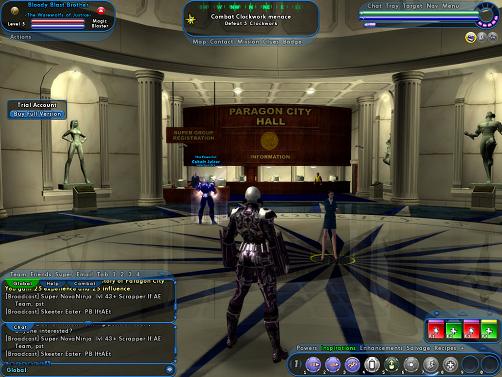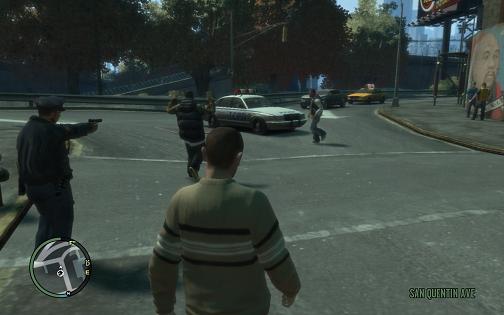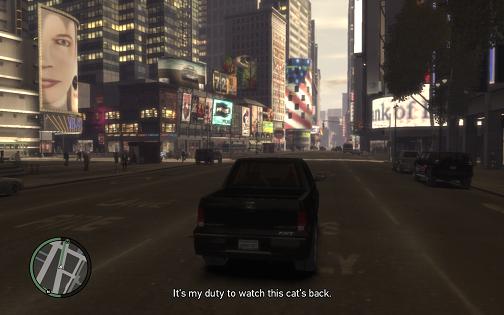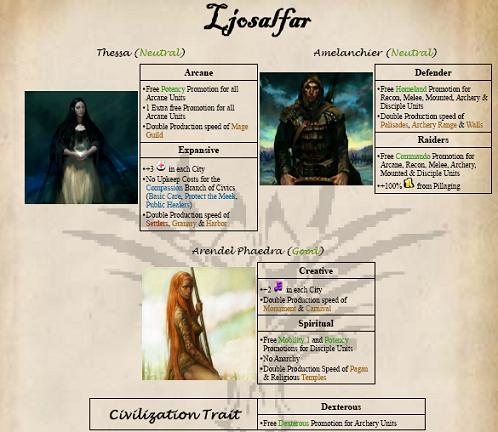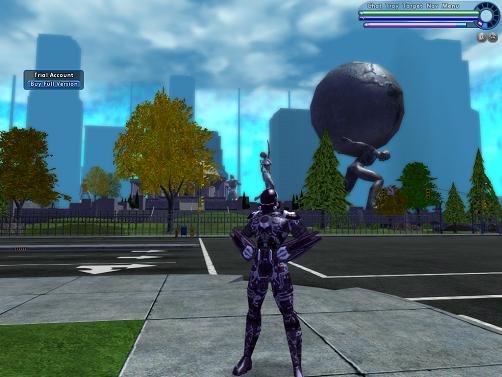
The bad news is I’ve still yet to receive my copy of Grand Theft Auto IV, so no new game for me. The good news is that since I’m leaving on holiday on Thursday anyway, I probably shouldn’t start a new game for real just yet, so I decided to download a free trial for yet another MMO. The game I picked was City of Heroes, one of the more unique MMOs out there and one that I’ve often wondered about.
Until Champions Online launches later this year, CoH is still the only MMO that lets you play as a superhero (or a supervillain if you so choose). This means that it has an extremely powerful and versatile character creation system and is set in a contemporary cityscape, the so-called Paragon City. Unusually for an MMO, it has no auto-attacks. All attacks are essentially powers that must be manually activated. Furthermore, characters in CoH can physically obstruct one another and a crude physics system allows characters to be knocked down or even blown away a fair distance when hit by the appropriate power.
A few things were apparent from the first moment I started up the game. This game is old and looks it. Not only is the graphics engine terribly dated by now, but its interface, user friendliness and general game design all mark it as very much a pre-World of Warcraft MMO. What’s surprising is that even though CoH launched only a few months earlier than WOW, it looks a lot older, with plain textures and blocky polygons and is far less polished.
The character creation system is indeed as powerful as advertised and to me was probably the most fun part of my short trial. While the combat system felt suitably visceral compared to other MMOs, I was bothered by the fact that although characters use their powers on each other, there’s next to nothing that they can do with their powers to the environment. This felt silly to me and detracted from the experience. You’re not superpowered unless you can throw cars around and blow buildings up in my book. I was annoyed that gameplay seemed to consist mostly of grinding on random mobs or running missions in buildings with the same layouts over and over again. It reminded me unpleasantly of my very first MMO experience with Anarchy Online.
One nice thing that I noticed was that players were generally serious about their character and took the time to design a cool costume and picking an appropriate name. People who are already used to the multitude of dumb and meaningless names in MMOs should know how significant this is. Unfortunately, this game is still too dated and too clunky to warrant any extended interest on my part. I am however looking forward to Champions Online.
